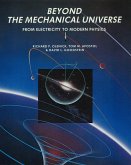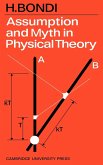A self-contained, comprehensive introduction to the theory of hydrodynamic lattice gases.
The text is a self-contained, comprehensive introduction to the theory of hydrodynamic lattice gases. Lattice-gas cellular automata are discrete models of fluids. Identical particles hop from site to site on a regular lattice, obeying simple conservative scattering rules when they collide. Remarkably, at a scale larger than the lattice spacing, these discrete models simulate the Navier-Stokes equations of fluid mechanics. This book addresses three important aspects of lattice gases. First, it shows how such simple idealised microscopic dynamics give rise to isotropic macroscopic hydrodynamics. Second, it details how the simplicity of the lattice gas provides for equally simple models of fluid phase separation, hydrodynamic interfaces, and multiphase flow. Lastly, it illustrates how lattice-gas models and related lattice-Boltzmann methods have been used to solve problems in applications as diverse as flow through porous media, phase separation, and interface dynamics. Many exercises and references are included.
Table of content:
Preface; Acknowledgements; 1. A simple model of fluid mechanics; 2. Two routes to hydrodynamics; 3. Inviscid two-dimensional lattice-gas hydrodynamics; 4. Viscous two-dimensional hydrodynamics; 5. Some simple 3D models; 6. The lattice-Boltzmann method; 7. Using the Boltzmann method; 8. Miscible fluids; 9. Immiscible lattice gases; 10. Lattice-Boltzmann method for immiscible fluids; 11. Immiscible lattice gases in three dimensions; 12. Liquid-gas models; 13. Flow through porous media; 14. Equilibrium statistical mechanics; 15. Hydrodynamics in the Boltzmann approximation; 16. Phase separation; 17. Interfaces; 18. Complex fluids and patterns; Appendices; Author Index; Subject Index.
Hinweis: Dieser Artikel kann nur an eine deutsche Lieferadresse ausgeliefert werden.
The text is a self-contained, comprehensive introduction to the theory of hydrodynamic lattice gases. Lattice-gas cellular automata are discrete models of fluids. Identical particles hop from site to site on a regular lattice, obeying simple conservative scattering rules when they collide. Remarkably, at a scale larger than the lattice spacing, these discrete models simulate the Navier-Stokes equations of fluid mechanics. This book addresses three important aspects of lattice gases. First, it shows how such simple idealised microscopic dynamics give rise to isotropic macroscopic hydrodynamics. Second, it details how the simplicity of the lattice gas provides for equally simple models of fluid phase separation, hydrodynamic interfaces, and multiphase flow. Lastly, it illustrates how lattice-gas models and related lattice-Boltzmann methods have been used to solve problems in applications as diverse as flow through porous media, phase separation, and interface dynamics. Many exercises and references are included.
Table of content:
Preface; Acknowledgements; 1. A simple model of fluid mechanics; 2. Two routes to hydrodynamics; 3. Inviscid two-dimensional lattice-gas hydrodynamics; 4. Viscous two-dimensional hydrodynamics; 5. Some simple 3D models; 6. The lattice-Boltzmann method; 7. Using the Boltzmann method; 8. Miscible fluids; 9. Immiscible lattice gases; 10. Lattice-Boltzmann method for immiscible fluids; 11. Immiscible lattice gases in three dimensions; 12. Liquid-gas models; 13. Flow through porous media; 14. Equilibrium statistical mechanics; 15. Hydrodynamics in the Boltzmann approximation; 16. Phase separation; 17. Interfaces; 18. Complex fluids and patterns; Appendices; Author Index; Subject Index.
Hinweis: Dieser Artikel kann nur an eine deutsche Lieferadresse ausgeliefert werden.








